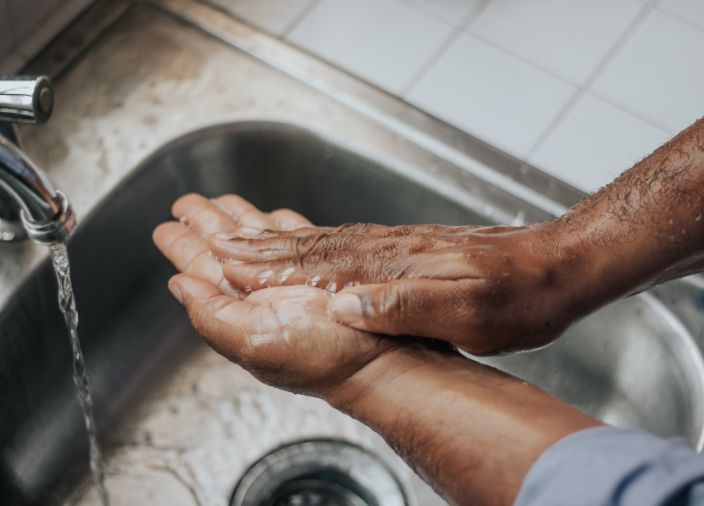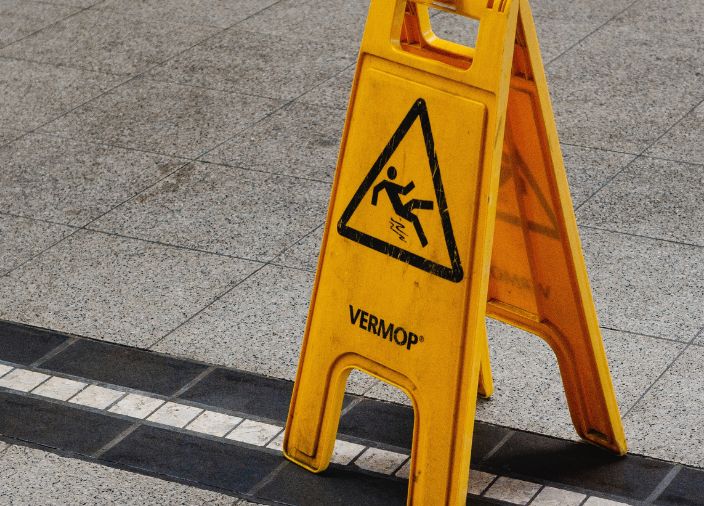
A Guide to Bar Safety & Risk Management
Bar venues face various types of risks which can impact operations, reputation, and profitability. Learn how to manage these risks in your venue.
Estimated reading time: 6 minutes
Benefits of Implementing Risk Management and Workplace Safety
Risk management and workplace safety are of utmost importance in bars and restaurants to safeguard the well-being of employees, customers, which will positively affect the overall success of the establishment. By prioritising these aspects, bars and restaurants can create a safer, healthier, and more productive environment.
Other benefits include:
Employee Well-Being & Lower Turnover
Customer Trust
Operational Efficiency
Legal Compliance
Cost Savings
Positive Work Environment
Key Risks to Be Aware of in your Venue
Food Safety Risks - these risks are related to the potential contamination, spoilage, or mishandling of food, leading to foodborne illnesses.
7 Tips for Food Safety

7 Tips for Food Safety
Employee Training – ensure that all staff receive proper training in food safety practices. This is usually mandated in most countries.
Hygiene Practices – provide hand sanitisers, gloves, and hairnets to maintain hygiene standards. Emphasise the importance of frequent handwashing for all employees.
Cross-Contamination Prevention – separate raw foods from ready-to-eat foods to prevent cross-contamination. Use separate cutting boards (colour-coded), utensils, and work surfaces for different types of foods.
Temperature Control – regularly check the temperatures of refrigerators, freezers and food storage areas to ensure that foods are kept at safe temperatures. Use food thermometers for cooked foods.
Inventory Management – implement F.I.F.O. (First In, First Out) system to reduce food spoilage and always check ‘best by’ dates before use.
Supplier Management – purchase from reputable suppliers that have systems in place for food safety and quality control. It’s also recommended to check if they have sustainable practices for their sourcing protocols.
Traceability – maintain accurate records of food sourcing, storage temperatures, cooking temperatures and expiration dates. This is useful in case of any food safety incidents and/or inspections.
Fire Safety
Proper fire safety is a must in food and beverage premises, especially in restaurant with busy kitchens.
Tips for Fire Prevention
Install and maintain any equipment – this includes smoke detectors, fire alarms, sprinkler systems and functioning fire extinguishers throughout the premises. Regularly inspect and test fire protection equipment to ensure they are in working condition, including ensuring the electrical outlets are not overloaded (which is a common issue in bars and restaurants).
Proper Storage and Handling - Store flammable materials and chemicals in designated areas. Maintain clear and unobstructed pathways to emergency exits and firefighting equipment.
Emergency Exits and Evacuation Plans - Clearly mark emergency exits with illuminated exit signs and always keep pathways unobstructed (this is mandated in most countries). Develop and communicate clear fire safety policies to all staff members, outlining their responsibilities in preventing and responding to fires.
Kitchen Safety - Install fire-resistant materials in the kitchen area, such as fire-resistant wall coverings and non-combustible flooring. Ensure proper ventilation to prevent the buildup of grease and smoke.
Maintenance and Inspections - Schedule regular inspections of fire protection systems and equipment by qualified professionals (and this applies to all electrical installation).
A Guide to Mitigating Slips, Trips & Falls

A Guide to Mitigating Slips, Trips & Falls
Reducing the risk of slips, trips, and falls in bars and restaurants is crucial to ensure the safety of both customers and staff. These incidents can result in injuries, legal liabilities, and damage to the establishment's reputation.
Floor Maintenance - All walking surfaces shall be kept clean, dry and clear of any obstacles. Non-slip floor surfaces are preferred and use appropriate cleaning products and techniques to prevent slippery surfaces. Ensure that floors are properly dried after cleaning.
Stairs and Steps - Install handrails on stairs and steps to provide support and balance for customers and staff. Ensure that stairs are well-maintained, with even surfaces and non-slip treads, and staff are careful not to carry too many items while using the stairs.
Spill Response - Train staff to respond quickly to spills and clean them up immediately. Provide spill kits with absorbent materials for fast cleanup and use "wet floor" signs to warn customers of potential hazards while the area is being cleaned (this is mandated in most countries).
Footwear Policy - Enforce a footwear policy that requires employees to wear slip-resistant shoes (at least staff working in kitchen and wet areas).
Proper Storage - Store items in designated areas to prevent clutter and ensure that cords, cables, and hoses are properly secured and not obstructing walkways.
A Guide to First Aid
Risk management and first aid are closely intertwined aspects of ensuring the safety and well-being of individuals in various environments.
First aid involves providing immediate assistance to individuals who have been injured or are in medical distress. It aims to stabilise the person's condition and prevent further harm. However, individuals providing first aid should only perform actions within their level of training and expertise. Deviating from their training could lead to legal liabilities if their actions cause harm.
Minor cuts and burns are common in the bar/restaurant setting and are relatively easy to treat. Choking on food items is not an uncommon occurrence, and a quick response (like the Heimlich manoeuvre) can save lives. As such it is always worthwhile to have staff trained in first aid (in some countries, it is compulsory to have at least one trained staff).
Important: Assess the situation carefully and call for emergency medical help immediately if needed!
Roles & Responsibilities

Roles & Responsibilities
Ensuring workplace safety is everyone’s responsibility! The combined efforts of managers and staff contribute to creating a safe and secure environment for all employees and guests.
Remember guests may be unfamiliar with the surroundings and will be relying on your training and readiness to provide guidance during emergencies for their personal safety.
Manager – Must dos
Ensure that regular health and safety discussions occur with all staff and that the discussion addressed areas where safety issues are most likely to occur.
Maintain an updated list of emergency contact numbers, including fire departments, medical services, and building management.
Actively seek ways to avoid incidents via the hierarchy of controls.
Ensure appropriate resources are made available to address or control incidents to reasonable levels.
Ensure risk assessments are conducted in areas where there are known risks.
Consider the potential for human error when carrying out risk assessments and incident investigations.
Ensure all related risk assessments are shared with employees.
Conduct a routine management review of site health and safety incidents.
During time of emergencies, be calm, and lead and instruct the team accordingly.
Staff – Must dos
Be attentive and always report any hazards, incidents, or accidents.
Help manage risk by taking the lead on removing the risk by making the area inaccessible to others, cleaning it up or asking for help and reporting the issue to relevant parties.
Share best practices and lessons learned from incidents.
Always use equipment the way they were intended to.
Always comply to policies and protocols.
Empower your team to keep up with industry trends, learn from the experts and discover invaluable resources for their bar career by encouraging them to sign up to the Diageo Bar Academy.
Related Content

Bar Management
Take your bartending skills to the next level with valuable insights, tools, techniques and online courses to enhance your bar career.
6 Essential Leadership Skills for Bar Managers
Explore the six most important leadership skills that any bar manager in hospitality needs to have for a successful career.
A Guide to Managing a Successful Backbar
Learn how to design and manage a backbar that is functional, boosts efficiency in service and impresses your customers.
